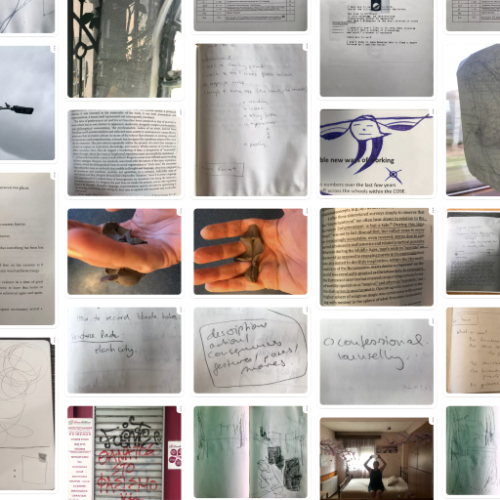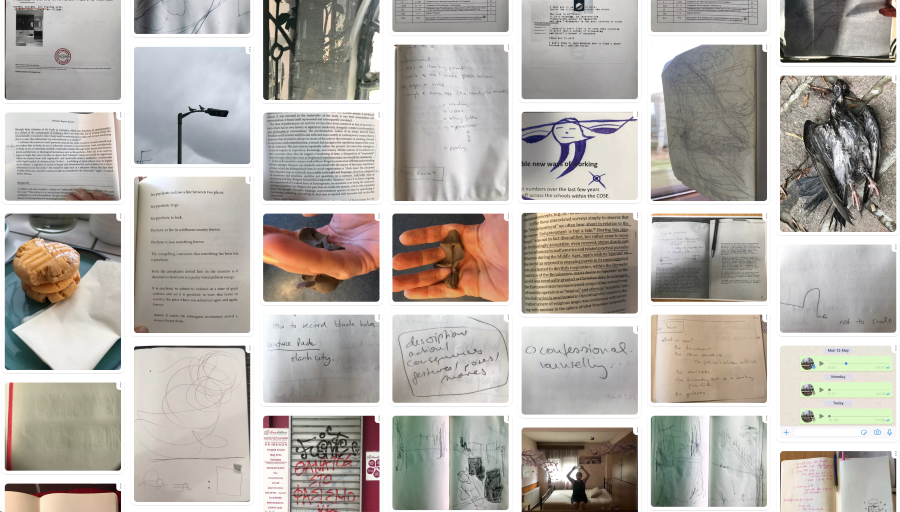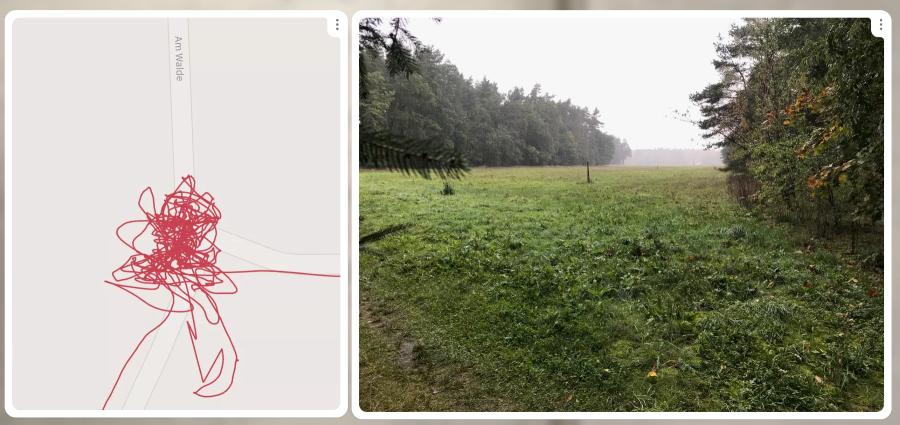
Practice-as-research and Research-as-practice. The Creative Arts work of Stage 3 student Gesa Helms.
In May, after concluding Stage 3 of the Creative Arts pathway, tutor Rachel Smith spoke with student Gesa Helms to explore the interweaving between practical and theoretical work in her practice and how practice-as-research methods have informed her three Stage 3 modules.
Gesa Helms’ Stage 3 work exists in the expanded field of drawing, engaging a wide range of methods which include photographic and digital processes, as well as using instructional methods to engage participation. Through her work, she has explored ideas of closeness, distance and contact while questioning what form the archive of a site might take.
Included in this blog post is a short section of the longer video conversation. After tracing Gesa’s development of site-based, experimental work in an institutional workspace for Drawing 2, Gesa introduced her research Padlet (Stromverteilen) and how she developed her interest in using a visual methodology to research space, contact, and their relationship. The video excerpt included here then discusses how these methods led her to a practice-as-research approach, across a site-based body of work, For Cover and her research dissertation, Moving with contact: the near space in an expanded field of drawing.
The dissertation brings together both an academic voice in traditional writing, alongside the creative voice which embraces different forms through the glossary, appendices and creative writing methods.
Watch the excerpt of the conversation, and explore the connected padlet spaces concerning the various methods Gesa’s work engages with and how such experimentation with different methods leads to an understanding of contact, distance and the role of abundant lint to form the basis of her artistic practice:
https://oca.cloud.panopto.eu/Panopto/Pages/Viewer.aspx?id=58be8991-b5ff-48d2-9edb-aee500eea2d0 ]
The rest of the conversation explores Gesa’s written work for her dissertation, its layering and use of different voices and positions to guide reader and audience, to watch the whole conversation you can use this link:
https://oca.cloud.panopto.eu/Panopto/Pages/Viewer.aspx?id=fa74e504-f19c-48af-8cdd-aee600b0fdcb
Gesa’s Stage 3 blog is at: https://resbowgh.wordpress.com and she can be contacted via Instagram @draw___lena


|
|







Really interesting. Thank you for sharing.
hi and thank you!
Thank you so much Gesa for taking the time to explain you process to well. It has been super inspiring to be-witness you unique process. I am now curious as to what my ‘lints’ will look like. I take courage from you words of wisdom on failure as our biggest asset and having confidence in not knowing and in the process. Good luck with the next steps. /inger
🙂 — lovely to have been in conversation these past couple of years, Inger and yes: curious about that in your work too and looking forward to seeing what you discover! Gx
Your work is fascinating, and complex – like an intricate tapestry of ideas and actions pulsating together whilst moving forward. I haven’t always understood it but it kept my attention throughout especially with your deep concentration on process. Thanks for sharing this Gesa.
hi Catherine — lovely to have been doing so for this length of time and to see where we headed. Still very fond of our early DI&C conversations with Stephanie!
This is so weird, its as if there is threading through an internal confused mess, ocasionally intersected with a calming bliss. It reminds me of an escape from an institution of learning or some sort of personality formation to beyond that, but it is quick, easy, normal and this is the art’s brilliance, its as if to say – ‘see their, back to my foundation, start again’, – (as easy as that).
Thanks for showing me this art Danny, Did I like it? – not really. Its viewpoint is very hard and objective, almost totalitarian and fundamentally voyeuristic, I suppose that is the ‘weirdness’ you are sensing.
hi — interesting. I’d be curious to know where you find it totalitarian? Thanks for your comment!
Hi Danny — Katrina Palmer’s Dark Object writes through such escape. It hadn’t occurred to me that my sketchbook materials read as similar. Interesting and thank you. Not sure it’s back to the start, I doubt it is, so it isn’t circular – it iterates though.
Thanks for showing me this art Danny, Did I like it? – not really. Its viewpoint is very hard and objective, almost totalitarian and fundamentally voyeuristic, I suppose that is the ‘weirdness’ you are sensing.
What it is leaving behind, or rather shedding of itself